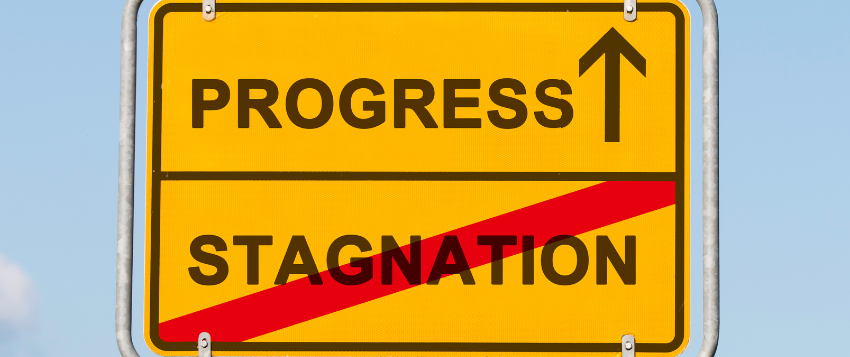In the natural world, a plateau is a flat, elevated stretch of land that provides a temporary resting place between steep ascents. Similarly, leaders often experience plateaus—periods where their growth stalls, innovation falters, and the challenges of leadership begin to feel repetitive. These moments of stagnation, while frustrating, are common in leadership journeys. However, just as hikers use a plateau to regroup and prepare for the next climb, leaders can approach these periods as opportunities for reflection and renewal.
In this article, we’ll explore the concept of a leadership plateau and how to navigate through it to unlock new levels of growth and impact.
Table of Contents
The Leadership Plateau: What Is It?

A leadership plateau occurs when leaders, despite their experience and efforts, feel that they are no longer growing or making meaningful progress. This can manifest in various ways:
- Repetitive Challenges: The problems and decisions faced start to feel repetitive, and there are fewer moments of excitement or learning.
- Lack of Innovation: New ideas are harder to come by, and the leaders may find themselves relying on familiar solutions rather than exploring fresh strategies.
- Stalled Professional Growth: Promotions, accolades, and recognition slow down or stop altogether, leading to a sense of stagnation in one’s career.
- Team Disengagement: The leader may notice that their influence on their team is waning, with engagement or productivity levels starting to drop.
Leadership plateaus are inevitable as part of personal and professional growth. However, they are also signals that it’s time to reassess and develop a new strategy to reignite progress.
Why Do Leaders Experience Plateaus?

Leadership plateaus can happen for several reasons, and understanding these can help in navigating through them.
- Routine and Comfort Zones: Over time, leaders become comfortable with their decision-making process, relying on past successes. This can create a sense of security but limit innovation and growth.
- Organisational Constraints: Sometimes, the structures or culture of an organisation can limit a leader’s ability to grow. A lack of new challenges or opportunities to innovate can leave even the most driven leaders feeling stuck.
- Burnout: The pressures of leadership can lead to burnout, causing a decline in motivation and creativity. When a leader is exhausted, it becomes harder to inspire others or pursue new initiatives.
- External Changes: Rapid shifts in the business environment, such as technological advancements or market disruptions, can make existing leadership strategies less effective, contributing to a plateau.
Recognising the causes of the leadership plateau allows leaders to address these challenges head-on, before they become permanent obstacles.
Breaking Through the Leadership Plateau

Overcoming a leadership plateau requires self-awareness, creativity, and often, a willingness to step outside your comfort zone. Here are several strategies to help you break through and continue your journey of growth.
1. Embrace Lifelong Learning
One of the key strategies for overcoming a leadership plateau is to reignite your passion for learning. Leadership is an evolving skillset, and staying relevant requires constant learning.
- New Perspectives: Enrol in leadership courses, attend seminars, or seek out thought leaders who can provide fresh insights into your leadership style and approach.
- Expand Your Expertise: Broaden your knowledge beyond your immediate responsibilities. Learn about new technologies, market trends, or leadership models that can help you innovate within your role.
2. Seek Feedback and Mentorship
Leaders can fall into the trap of believing that they must always have the answers, but great leadership often involves seeking feedback and guidance from others.
- 360-Degree Feedback: Consider initiating a 360-degree feedback process to understand how your team, peers, and superiors perceive your leadership. This can reveal areas for growth that you may not have recognised.
- Mentorship: Engage with a mentor who can provide insights from their own experiences and help you navigate the challenges of leadership. A mentor can serve as a sounding board, offering new perspectives and solutions.
3. Set New Leadership Challenges
Stagnation often occurs when leaders stop challenging themselves. Reignite your leadership by setting new, ambitious goals that push you to innovate and grow.
- Cross-functional Leadership: Step outside your usual domain and lead initiatives that require collaboration across departments or teams. This can broaden your influence and stretch your leadership capabilities.
- Personal Development Goals: Set goals that focus not only on your leadership but also on personal growth, such as improving your communication skills, emotional intelligence, or decision-making processes.
4. Reinvigorate Your Team
Leaders are defined by the impact they have on their teams. If you’re experiencing a plateau, your team may be feeling the effects as well.
- Delegate More Responsibility: Empower your team by delegating more responsibility and encouraging innovation. This will not only drive growth within the team but also free you to focus on strategic initiatives.
- Inspire Through Purpose: Refocus your team’s energy by reconnecting them with the broader purpose of the organisation. A renewed sense of mission can help reinvigorate engagement and productivity.
Accepting the Plateau

While the goal is to break through the plateau, there is also value in recognising when a period of stability is necessary. Not all plateaus are negative; some can serve as moments for reflection and renewal.
1. Pause for Reflection
Use it as a time to reflect on your leadership journey. What have you achieved so far? What lessons have you learned? Taking stock of your progress can provide clarity and a renewed sense of purpose.
2. Consolidate Your Strengths
Plateaus can be a time to solidify your leadership strengths. By focusing on refining your existing skills and strategies, you ensure that when the next challenge arises, you’re better equipped to face it.
3. Rest and Recover
Leadership can be exhausting, and sometimes a plateau is simply a sign that you need to rest. Taking time to recover from the mental and emotional strain of leadership can help you return to your role with renewed energy and focus.
Leadership plateaus are not the end of the journey; rather, they are a natural part of the process. They provide an opportunity to pause, reflect, and gather the resources needed to break through to the next level. By embracing learning, seeking feedback, setting new challenges, and reinvigorating your team, you can turn a period of stagnation into one of renewal and growth.
Remember, every plateau in leadership is just a stepping stone to higher ground. Use it wisely, and you’ll emerge stronger and more capable on the other side.






